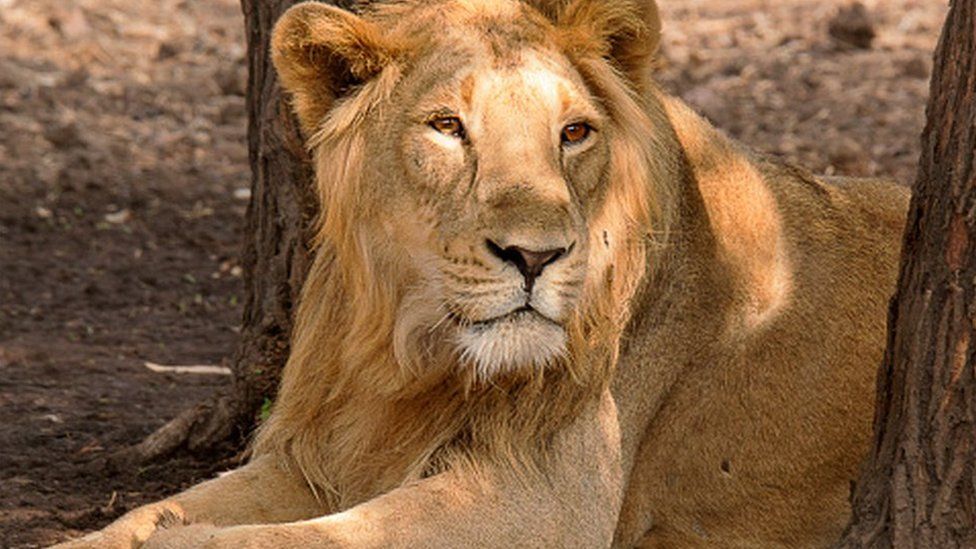ARTICLE AD BOX
By Roxy Gagdekar Chhara
BBC Gujarati
 Image source, Getty Images
Image source, Getty Images
Lions were once widespread across Gujarat
The coastal areas of the western Indian state of Gujarat are now home to more than 100 lions. Experts say it shows that their natural habitat is shrinking.
The Gir forest in Gujarat - the only natural habitat of the Asiatic lion - had around 400 lions in 2020, according to a state forest department estimate. The rest of the state has around 275 lions, of which 104 have spread themselves across 300km (186 miles) of Gujarat's coastline.
Conservationists say the unusual movement is happening because the natural habitat of lions has become overcrowded.
"Normally, it is difficult for lions to adapt to a coastal habitat, but they have no option because of scarcity of land," Dr Nishith Dhariya, a wildlife scholar, says.
Lions were once widespread across Gujarat, but their numbers shrank to a mere dozen in the early 20th Century, mainly due to hunting and drought.
Since then, conservation efforts have helped their population soar in the dry, deciduous Gir forests. But many experts have said for years that the Gir sanctuary has become too small for the territorial animals.
Image source, Pavan Jaishwal
Image caption,Experts say lions in Gujarat have often adapted to habitat changes
Forest officers say the lions began reaching coastal regions in the 1990s because of territory wars.
"A lion normally requires a territory of around 100-sq-km (38-sq-mile), and this area also includes three-four lionesses living with their cubs. As the cub grows into an adult, he either takes over the territory from the old lion or leaves the pride to find a new territory," says Shyamal Tikadar, a top state forest official.
The lions reach coastal areas because they usually follow the Heran river, which passes through the Gir forest and meets the Arabian sea in Somnath district.
This means that people like Uday Shah - who has a farmhouse by the sea in Veraval district, 80km (50 miles) away from the Gir forest - are now used to seeing lions regularly on the beach.
"We were scared at first when we saw them, but now they don't bother us," he says.
Image source, Paavan Jaishwal
Image caption,Forest officers say the lions began reaching coastal regions because of territory wars
HD Galchar, forest officer of the Veraval range, says a pride of around seven lions has been living near the coast for the past few years. He says the forest department began planting deciduous gum arabic trees in coastal regions when they noticed an uptick in the lion population.
Opposite the Veraval sea coast, now there is a thin strip of gum arabic trees and that's where where the pride lives. It gives them a habitat that is somewhat similar to the Gir forest.
Mr Galchar says that sometimes, they hunt wild boars and blue bulls (nilgai) in reserved forests around coastal regions.
But when they can't find prey, they go to nearby villages and kill goats and cows.
Natha Parmar, who has a mango farm near the Heran river in Somnath district, says lions have killed at least 10 of his calves in the past few years.
He and other villagers were furious at first. But then they realised that there was an unexpected benefit.
"Earlier, we had to deal with herds of wild boar and blue bulls as they would damage all our crops. Now that has almost stopped," he says.
He and other farmers are now learning to live cautiously and respectfully with the lions. It helps that the lions haven't attacked any humans in the area until now.
"When we run into lions, we either stop and make way for them or change our route without disturbing them," he says.
Image source, Pavan Jaishwal
Image caption,Jheenabai tracks lions in coastal areas regularly for the forest department
Jheenabai, who tracks lions in coastal areas regularly for the forest department, says people in the region are changing their way of life to adapt to lions, much like the humans around Gir did earlier.
"Sometimes, the lions move out to nearby forests or residential areas to hunt, but then they come back here to rest. They have adapted to this habitat," he claims.
Lions in Gujarat have adapted to habitat changes according to circumstances, says wildlife expert Rajan Joshi. They had become used to living near humans in Gir, he says, and later, in open fields as the numbers grew.
You may also be interested in:
This lion in India’s Gujarat state had to get surgery on both eyes.

 2 years ago
37
2 years ago
37








 English (US) ·
English (US) ·